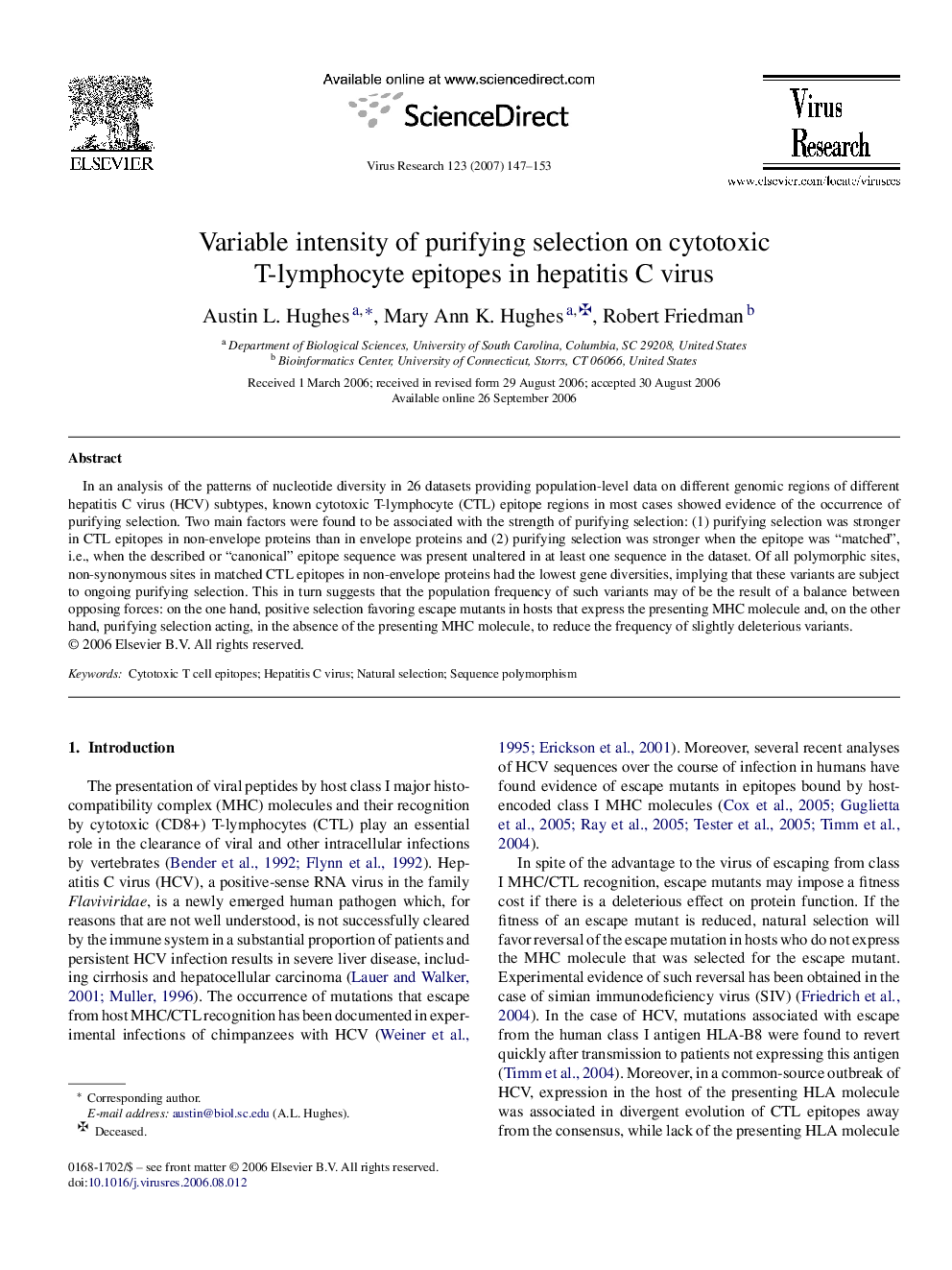| Article ID | Journal | Published Year | Pages | File Type |
|---|---|---|---|---|
| 3430862 | Virus Research | 2007 | 7 Pages |
Abstract
In an analysis of the patterns of nucleotide diversity in 26 datasets providing population-level data on different genomic regions of different hepatitis C virus (HCV) subtypes, known cytotoxic T-lymphocyte (CTL) epitope regions in most cases showed evidence of the occurrence of purifying selection. Two main factors were found to be associated with the strength of purifying selection: (1) purifying selection was stronger in CTL epitopes in non-envelope proteins than in envelope proteins and (2) purifying selection was stronger when the epitope was “matched”, i.e., when the described or “canonical” epitope sequence was present unaltered in at least one sequence in the dataset. Of all polymorphic sites, non-synonymous sites in matched CTL epitopes in non-envelope proteins had the lowest gene diversities, implying that these variants are subject to ongoing purifying selection. This in turn suggests that the population frequency of such variants may of be the result of a balance between opposing forces: on the one hand, positive selection favoring escape mutants in hosts that express the presenting MHC molecule and, on the other hand, purifying selection acting, in the absence of the presenting MHC molecule, to reduce the frequency of slightly deleterious variants.
Related Topics
Life Sciences
Immunology and Microbiology
Virology
Authors
Austin L. Hughes, Mary Ann K. Hughes, Robert Friedman,
